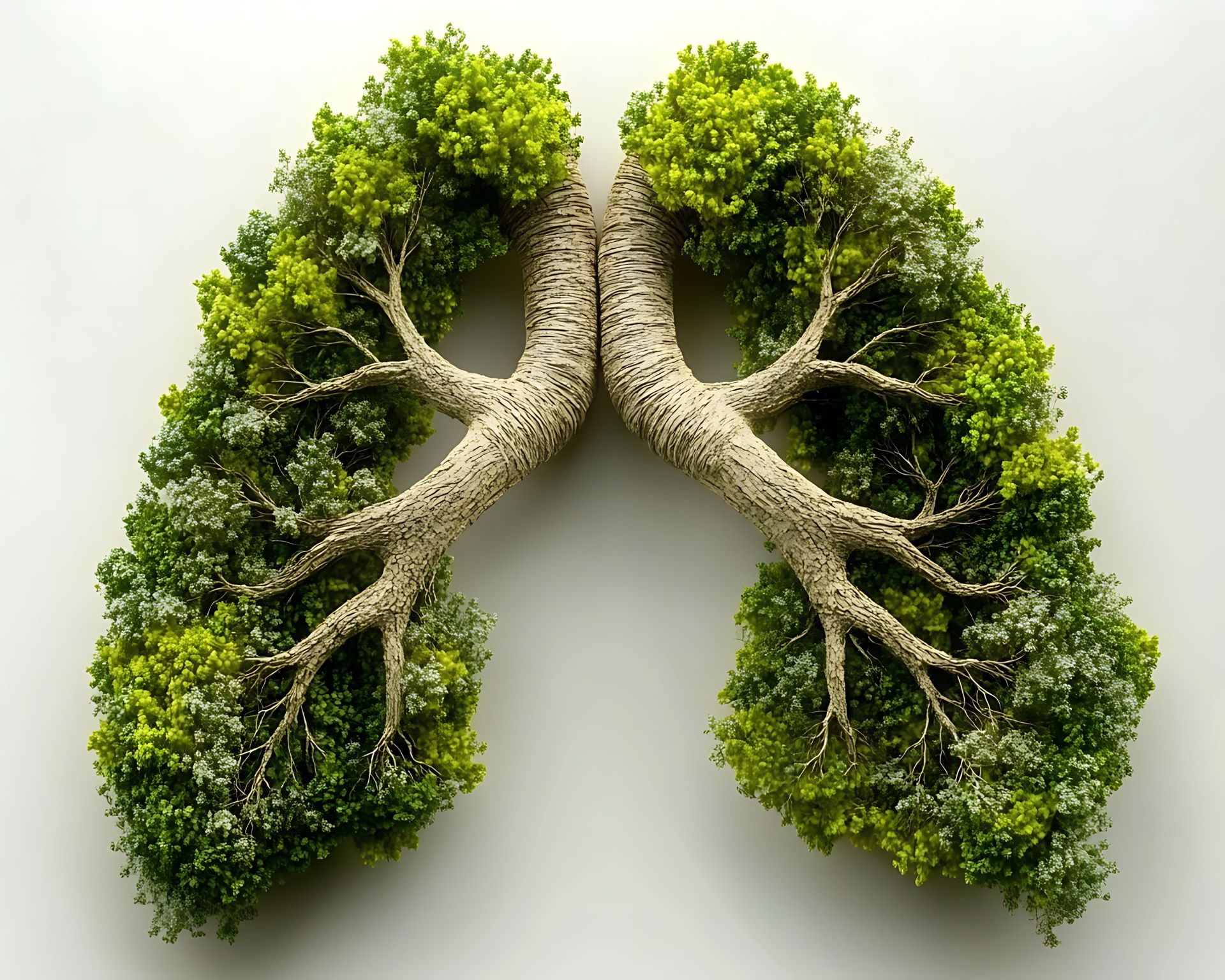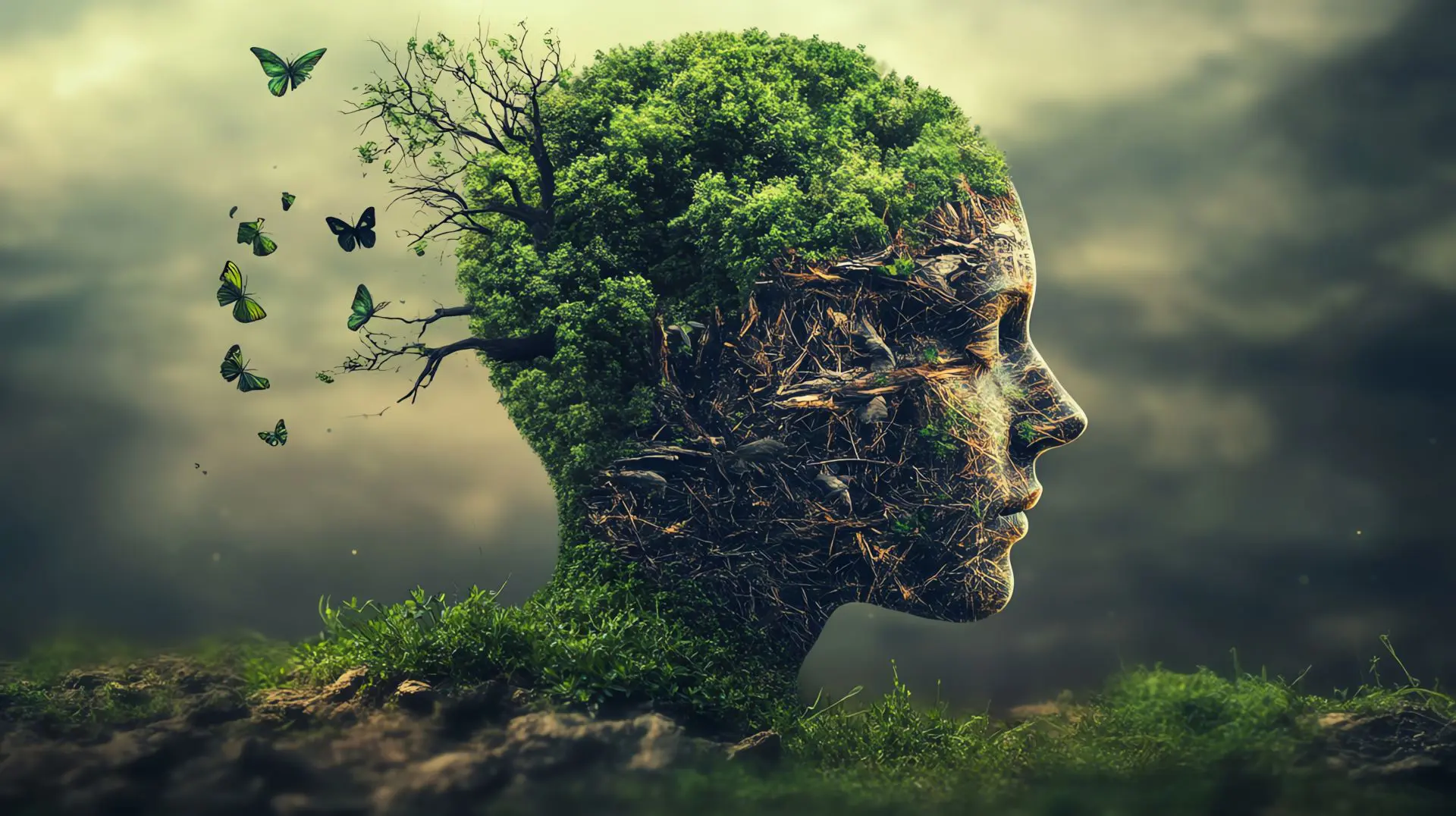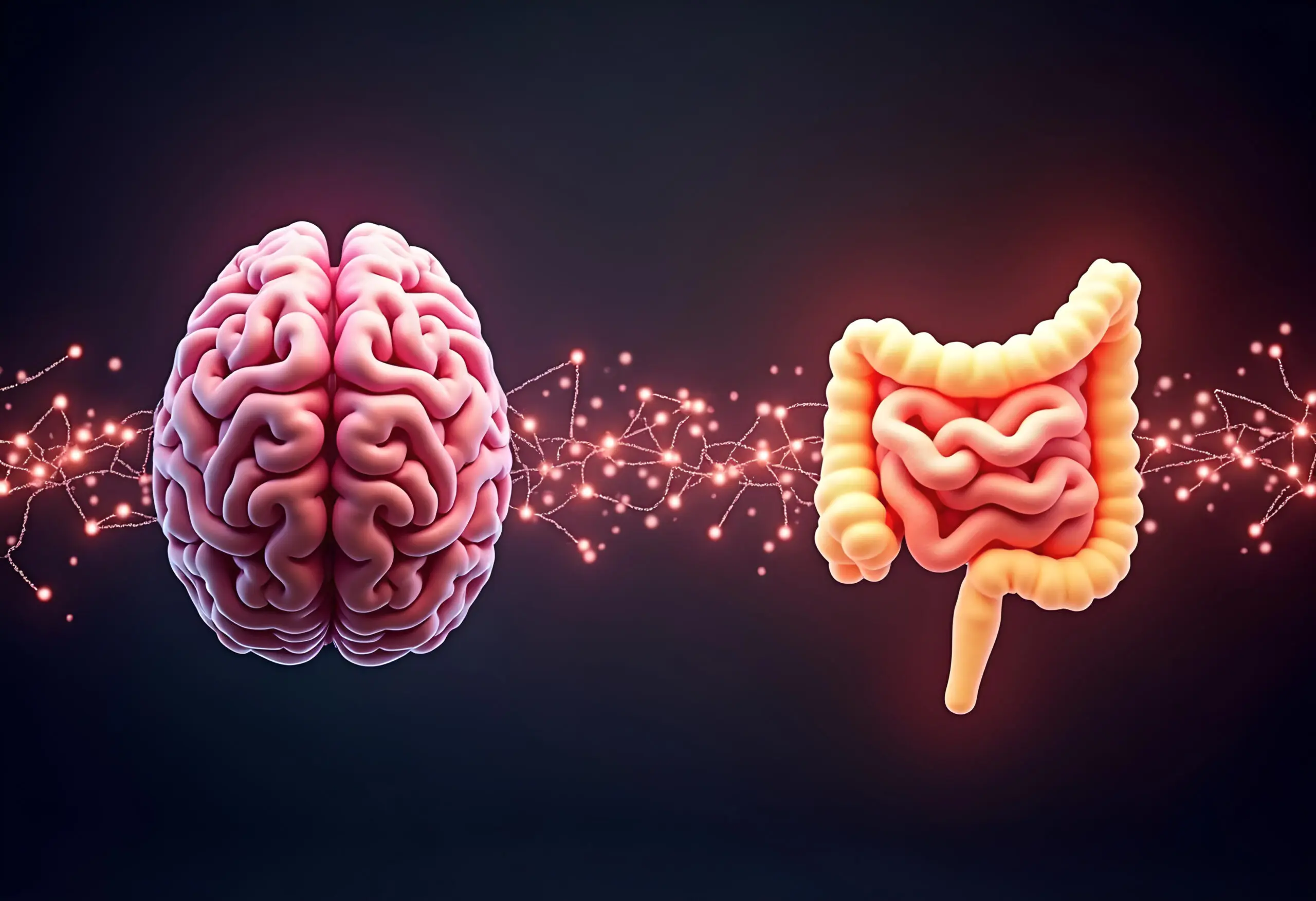
Psilocybin for Cognitive Function
Introduction
Does psilocybin improve cognitive function? This blog delves into the impact of psilocybin on the brain and cognition, exploring the brain networks and processes involved in this aspect of our minds and how psilocybin affects these networks, as well as the cognitive benefits that psilocybin may offer. These range from increased creativity, mental flexibility, and insight, to enhanced empathy, openness & mindfulness. Read on to discover the latest on the potential cognitive effects of how psilocybin affects the brain.
What is cognition?
“Cognition” refers to the mental processes involved in acquiring, processing, storing, and using information [1]. Cognition is how our brains use information to make sense of the world around us and navigate in daily life. This process involves several interrelated sub-processes that work together to enable us to think, reason, and learn. Forming the foundation of cognitive functioning is perception, which is used to gather information, attention, which is used to filter information, and memory, which is used to store information.
Cognition also involves higher-order thinking skills, such as reasoning, problem-solving, and decision-making. These skills rely on our ability to apply knowledge and experience to new situations, to identify patterns and relationships, and to evaluate and synthesize information. The central importance of cognition for our wellbeing is revealed by the impacts of disorders that impair its functioning, such as dementia, Alzheimer’s disease, and attention deficit hyperactivity disorder (ADHD). Investing in improving our cognitive function can have positive impacts throughout our lives.
Cognitive brain networks
Like all mental processes, cognitive processes are dependent on the brain [2]. This makes it possible for substances like psilocybin to alter cognition by acting on the brain. Our ability to think, reason, and learn is supported by “cognitive brain networks”, groups of interconnected brain regions that work together to support specific functions [3]. By mapping the structure of these networks, scientists have been able to identify how different areas of the brain work together to support specific cognitive processes. But the question remains – is psilocybin good for the brain?
How does psilocybin affect the brain & cognitive networks?
Psilocybin and cognitive function go hand in hand. Psilocybin works by binding to serotonin receptors in the brain, particularly the 5-HT2A receptor [4], which leads to changes in brain activity and connectivity. Concentrations of 5-HT2A receptors vary throughout the brain [5], leading to differing effects on different brain regions and networks.
One cognitive network that is particularly impacted by psilocybin is the default mode network (DMN) [6], a network of brain regions that is active when the brain is at rest and not engaged in a specific task [7]. We might assume that little cognitive processing occurs when we are at rest but this is not the case. When left to wander, our minds habitually project an image of ourselves into past memories or into plans for the future, a complex mental feat [8]. Constructing such complex thoughts about ourselves and our lives is a core function of the DMN, along with self-reflection, mind-wandering, and imagination [9].
Psilocybin alters activity in important components of the DMN, such as areas of the cingulate cortex in the center of the brain, where the two hemispheres meet [10]. The DMN and its associated brain regions have an outsized impact on the activity in other brain areas, controlling what information is processed in order to orchestrate our mental activity into a coherent narrative about ourselves and the world [11]. Psilocybin temporarily relaxes the domineering control of the DMN, allowing more interconnectivity between brain areas that do not typically connect with each other [12].
Creativity, Cognitive Flexibility, and Insight
During the psilocybin experience itself, our perception and cognition is radically altered [13]. We may temporarily struggle to perform simple cognitive tasks, such as focusing our attention or recalling certain information [14]. This reduction in the ability to perform such tasks goes along with an enhancement in other desirable aspects of cognition, namely creativity, mental flexibility, and our capacity for insight [15].
With reduced DMN activity and increased connectivity between brain regions, the brain on psilocybin is more flexible and less constrained [16]. This creates a fertile ground for novel and creative connections to be made between different pieces of information, connections that would have been dismissed by the controlling assumptions of the DMN during normal functioning. Because of this, many people use psilocybin for brain fog.
Research into the effects of psychedelics on creativity has a long history, beginning in the 60s with Jim Fadman’s work using LSD. This work would later appear in his classic psychedelic text “The Psychedelic Explorer’s Guide: Safe, Therapeutic, and Sacred Journeys” [17]. During the same decade, the clear effect of psychedelics on creativity was being seen in the wider culture, with the radical influence these substances would have on popular music. Researcher Ronald Fisher would be the first to scientifically characterize the effects on psilocybin in particular on creativity in the early 70s, identifying clear increases in creativity on writing and drawing tasks [18].
Contemporary research over the last decade has been conducted to a more rigorous standard and has begun to dissect the nuances of psilocybin’s effect on creative cognition. Creative thinking does not simply consist in generating ideas, known as divergent thinking, but also in evaluating which of these ideas are most suitable for solving the given problem, known as convergent thinking [19]. Psilocybin has been found to have differing effects on these two aspects of creative cognition.
One study found that psilocybin increases divergent thinking, the spontaneous creative thoughts associated with insight, but reduces convergent thinking during the experience, the ability to trim down the ideas to just the best ones [15]. The researchers observed that the increase in the capacity for creative divergent thinking was still present after one week. In the same study, researchers used brain imaging techniques to link these psychological effects to changes in the DMN. The psilocybin experience itself may therefore be seen as being better suited to the idea generation stage of problem solving, rather than to the cool-headed deliberative phase where the evaluation of the quality of the ideas occurs.
Anecdotally, people report finding benefits in the areas of creative problem solving and workplace productivity when taking microdoses of psychedelics like psilocybin and LSD. Research is currently underway to tease apart the effects of the psychedelics from the placebo effect at these small doses, and the jury is still out at the time of writing [20].
Empathy
We may associate empathy with feeling rather than thinking, but the cognitive ability to imagine what it is like to be someone else is a crucial component of this skill. One study of individuals taking part in a psilocybin retreat found that a single psilocybin ceremony enhanced empathy of other people’s emotions when tested the morning after [21]. This effect was found to still be present when they were tested again seven days after the psilocybin experience.
The key brain regions involved in empathy include the prefrontal cortex, insula, and anterior cingulate cortex [22]. The prefrontal cortex is involved in many higher-order cognitive processes, including perspective-taking and theory of mind, which allow us to understand the mental states of others. The insula is involved in emotion processing and is activated when we experience emotions ourselves or when we observe others experiencing emotions. The anterior cingulate cortex is involved in attention and decision-making, and it plays a key role in regulating emotional responses and empathy. Each of these brain regions are affected by psilocybin, producing its profound effects on emotional processing and empathy [23].
Serotonin has also been found to affect prosocial behavior and empathy [24]. As psilocybin acts on the serotonin system this may be another reason that this substance has the power to enhance empathic cognition. The reduction in DMN activity may also play a role, as the DMN typically keeps us focused on ourselves [25]. With DMN activity reduced, we may be able to become less self focused and more open to the experiences of others.
Openness & Mindfulness
Openness to new experiences is a fundamental personality trait that is strongly associated with creativity and was previously thought to be relatively fixed throughout a person’s lifetime [26]. It is characterized by a willingness to try new things, think outside the box, and explore new ideas and perspectives. Psilocybin has been found to increase this capacity [27], overturning the assumption that this capacity is fixed. The integration of information across different brain regions that a reduction in DMN activity produces may also underlie these increases in openness to experience. This is because, under the influence of psilocybin, the brain moves into a state where new information can be processed and new connections made, instead of being stuck in its same old habitual patterns.
Mindfulness is a related mental capacity, the ability to connect to the present moment in a nonjudgmental manner [28]. A single dose of psilocybin has also been found to increase participants’ mindfulness [29]. This increase in mindfulness was still observed three months later. In another study, participants on a five-day mindfulness retreat were given psilocybin, an intervention that successfully increased their level of mindfulness after the retreat [30]. Mindfulness is known to promote positive mood and wellbeing [31], and this may be one aspect of why psilocybin does the same [32].
Memory
Memory is a complex process that involves the encoding, storage, and retrieval of information. Psilocybin increases the brain’s capacity for neuroplasticity, the physical basis of memory and learning [33]. As a result, psilocybin can produce lasting changes in our cognition [34]. Much of the research cited here found positive effects that lasted for months after a single psilocybin experience. It is this ability to act directly on the mechanism underlying learning and memory, neuroplasticity, that makes psilocybin such a powerful tool for personal transformation.
Conclusion
So, is psilocybin good for the brain? While research into the effects of psilocybin on cognitive function is still in its early stages, recent findings suggest that psilocybin may have significant lasting cognitive benefits, particularly in the areas of creativity, insight, empathy, openness, and mindfulness. As our understanding of the brain and cognition continues to evolve, further research into the potential cognitive benefits of psilocybin may lead to new avenues for improving cognitive function and mental wellbeing.
References:
[1] Posner, Michael I. Cognition: An Introduction. Cognition: An Introduction. Oxford, England: Scott, Foresman, 1973.
[2] Albright, Thomas D, Eric R Kandel, and Michael I Posner. “Cognitive Neuroscience.” Current Opinion in Neurobiology 10, no. 5 (October 1, 2000): 612–24. https://doi.org/10.1016/S0959-4388(00)00132-X.
[3] Bressler, Steven L., and Vinod Menon. “Large-Scale Brain Networks in Cognition: Emerging Methods and Principles.” Trends in Cognitive Sciences 14, no. 6 (June 1, 2010): 277–90. https://doi.org/10.1016/j.tics.2010.04.004.
[4] Kometer, Michael, André Schmidt, Lutz Jäncke, and Franz X. Vollenweider. “Activation of Serotonin 2A Receptors Underlies the Psilocybin-Induced Effects on α Oscillations, N170 Visual-Evoked Potentials, and Visual Hallucinations.” Journal of Neuroscience 33, no. 25 (June 19, 2013): 10544–51. https://doi.org/10.1523/JNEUROSCI.3007-12.2013.
[5] Burnet, P. W. J., S. L. Eastwood, K. Lacey, and P. J. Harrison. “The Distribution of 5-HT1A and 5-HT2A Receptor MRNA in Human Brain.” Brain Research 676, no. 1 (April 3, 1995): 157–68. https://doi.org/10.1016/0006-8993(95)00104-X.
[6] Gattuso, James J, Daniel Perkins, Simon Ruffell, Andrew J Lawrence, Daniel Hoyer, Laura H Jacobson, Christopher Timmermann, et al. “Default Mode Network Modulation by Psychedelics: A Systematic Review.” International Journal of Neuropsychopharmacology 26, no. 3 (March 1, 2023): 155–88. https://doi.org/10.1093/ijnp/pyac074.
[7] Raichle, Marcus E. “The Brain’s Default Mode Network.” Annual Review of Neuroscience 38, no. 1 (2015): 433–47. https://doi.org/10.1146/annurev-neuro-071013-014030.
[8] Christoff, Kalina, Zachary C. Irving, Kieran C. R. Fox, R. Nathan Spreng, and Jessica R. Andrews-Hanna. “Mind-Wandering as Spontaneous Thought: A Dynamic Framework.” Nature Reviews Neuroscience 17, no. 11 (November 2016): 718–31. https://doi.org/10.1038/nrn.2016.113.
[9] Poerio, Giulia L., Mladen Sormaz, Hao-Ting Wang, Daniel Margulies, Elizabeth Jefferies, and Jonathan Smallwood. “The Role of the Default Mode Network in Component Processes Underlying the Wandering Mind.” Social Cognitive and Affective Neuroscience 12, no. 7 (July 1, 2017): 1047–62. https://doi.org/10.1093/scan/nsx041.
[10] Doss, Manoj K., Michal Považan, Monica D. Rosenberg, Nathan D. Sepeda, Alan K. Davis, Patrick H. Finan, Gwenn S. Smith, et al. “Psilocybin Therapy Increases Cognitive and Neural Flexibility in Patients with Major Depressive Disorder.” Translational Psychiatry 11, no. 1 (November 8, 2021): 1–10. https://doi.org/10.1038/s41398-021-01706-y.
[11] Carhart-Harris, R. L., and K. J. Friston. “The Default-Mode, Ego-Functions and Free-Energy: A Neurobiological Account of Freudian Ideas.” Brain 133, no. 4 (April 1, 2010): 1265–83. https://doi.org/10.1093/brain/awq010.
[12] Carhart-Harris, R. L., and K. J. Friston. “REBUS and the Anarchic Brain: Toward a Unified Model of the Brain Action of Psychedelics.” Edited by Eric L. Barker. Pharmacological Reviews 71, no. 3 (July 1, 2019): 316–44. https://doi.org/10.1124/pr.118.017160.
[13] Griffiths, R. R., W. A. Richards, U. McCann, and R. Jesse. “Psilocybin Can Occasion Mystical-Type Experiences Having Substantial and Sustained Personal Meaning and Spiritual Significance.” Psychopharmacology 187, no. 3 (August 1, 2006): 268–83. https://doi.org/10.1007/s00213-006-0457-5.
[14] Carter, Olivia L., David C. Burr, John D. Pettigrew, Guy M. Wallis, Felix Hasler, and Franz X. Vollenweider. “Using Psilocybin to Investigate the Relationship between Attention, Working Memory, and the Serotonin 1A and 2A Receptors.” Journal of Cognitive Neuroscience 17, no. 10 (October 2005): 1497–1508. https://doi.org/10.1162/089892905774597191.
[15] Mason, Natasha L., Elisabeth Mischler, Malin V. Uthaug, and Kim P. C. Kuypers. “Sub-Acute Effects of Psilocybin on Empathy, Creative Thinking, and Subjective Well-Being.” Journal of Psychoactive Drugs 51, no. 2 (March 15, 2019): 123–34. https://doi.org/10.1080/02791072.2019.1580804.
[16] Carhart-Harris, Robin, Robert Leech, Peter Hellyer, Murray Shanahan, Amanda Feilding, Enzo Tagliazucchi, Dante Chialvo, and David Nutt. “The Entropic Brain: A Theory of Conscious States Informed by Neuroimaging Research with Psychedelic Drugs.” Frontiers in Human Neuroscience 8 (2014). https://www.frontiersin.org/articles/10.3389/fnhum.2014.00020.
[17] Fadiman. “The Psychedelic Explorer’s Guide | Dr. James Fadiman’s Manual Offers Helpful and Well-Informed Guidance for Those Who Seek ‘the Divine within’ through Sacred Plants and Psychedelic Substances.” Accessed April 2, 2023. https://www.psychedelicexplorersguide.com/.
[18] Landon, M, and R Fischer. “On Similar Linguistic Structures in Creative Performance and Psilocybin-Induced Experience.” Confinia Psychiatrica Borderland of Psychiatry. Grenzgebiete Der Psychiatrie. Les Confins de La Psychiatrie 13, no. 2 (January 1, 1970): 115–38.
[19] Cropley, Arthur. “In Praise of Convergent Thinking.” Creativity Research Journal 18, no. 3 (July 1, 2006): 391–404. https://doi.org/10.1207/s15326934crj1803_13.
[20] Kuypers, Kim PC, Livia Ng, David Erritzoe, Gitte M Knudsen, Charles D Nichols, David E Nichols, Luca Pani, Anaïs Soula, and David Nutt. “Microdosing Psychedelics: More Questions than Answers? An Overview and Suggestions for Future Research.” Journal of Psychopharmacology 33, no. 9 (September 1, 2019): 1039–57. https://doi.org/10.1177/0269881119857204.
[21] Mason, Natasha L., Elisabeth Mischler, Malin V. Uthaug, and Kim P. C. Kuypers. “Sub-Acute Effects of Psilocybin on Empathy, Creative Thinking, and Subjective Well-Being.” Journal of Psychoactive Drugs 51, no. 2 (March 15, 2019): 123–34. https://doi.org/10.1080/02791072.2019.1580804.
[22] Marsh, Abigail A. “The Neuroscience of Empathy.” Current Opinion in Behavioral Sciences, Emotion-cognition interactions, 19 (February 1, 2018): 110–15. https://doi.org/10.1016/j.cobeha.2017.12.016.
[23] Daws, Richard E., Christopher Timmermann, Bruna Giribaldi, James D. Sexton, Matthew B. Wall, David Erritzoe, Leor Roseman, David Nutt, and Robin Carhart-Harris. “Increased Global Integration in the Brain after Psilocybin Therapy for Depression.” Nature Medicine 28, no. 4 (April 2022): 844–51. https://doi.org/10.1038/s41591-022-01744-z.
[24] Moul, Caroline, David J. Hawes, and Mark R. Dadds. “Mapping the Developmental Pathways of Child Conduct Problems through the Neurobiology of Empathy.” Neuroscience & Biobehavioral Reviews, Conduct disorders, 91 (August 1, 2018): 34–50. https://doi.org/10.1016/j.neubiorev.2017.03.016.
[25] Davey, Christopher G., Jesus Pujol, and Ben J. Harrison. “Mapping the Self in the Brain’s Default Mode Network.” NeuroImage 132 (May 15, 2016): 390–97. https://doi.org/10.1016/j.neuroimage.2016.02.022.
[26] McCrae, Robert R., and Angelina R. Sutin. “Openness to Experience.” In Handbook of Individual Differences in Social Behavior, 257–73. New York, NY, US: The Guilford Press, 2009.
[27] MacLean, Katherine A, Matthew W Johnson, and Roland R Griffiths. “Mystical Experiences Occasioned by the Hallucinogen Psilocybin Lead to Increases in the Personality Domain of Openness.” Journal of Psychopharmacology 25, no. 11 (November 1, 2011): 1453–61. https://doi.org/10.1177/0269881111420188.
[28] Kabat-Zinn, Jon. “Mindfulness.” Mindfulness 6, no. 6 (December 1, 2015): 1481–83. https://doi.org/10.1007/s12671-015-0456-x.
[29] Madsen, Martin Korsbak, Patrick MacDonald Fisher, Dea Siggaard Stenbæk, Sara Kristiansen, Daniel Burmester, Szabolcs Lehel, Tomas Páleníček, et al. “A Single Psilocybin Dose Is Associated with Long-Term Increased Mindfulness, Preceded by a Proportional Change in Neocortical 5-HT2A Receptor Binding.” European Neuropsychopharmacology 33 (April 1, 2020): 71–80. https://doi.org/10.1016/j.euroneuro.2020.02.001.
[30] Smigielski, Lukasz, Milan Scheidegger, Michael Kometer, and Franz X. Vollenweider. “Psilocybin-Assisted Mindfulness Training Modulates Self-Consciousness and Brain Default Mode Network Connectivity with Lasting Effects.” NeuroImage 196 (August 1, 2019): 207–15. https://doi.org/10.1016/j.neuroimage.2019.04.009.
[31] Gu, Jenny, Clara Strauss, Rod Bond, and Kate Cavanagh. “How Do Mindfulness-Based Cognitive Therapy and Mindfulness-Based Stress Reduction Improve Mental Health and Wellbeing? A Systematic Review and Meta-Analysis of Mediation Studies.” Clinical Psychology Review 37 (April 1, 2015): 1–12. https://doi.org/10.1016/j.cpr.2015.01.006.
[32] Kraehenmann, Rainer, Katrin H. Preller, Milan Scheidegger, Thomas Pokorny, Oliver G. Bosch, Erich Seifritz, and Franz X. Vollenweider. “Psilocybin-Induced Decrease in Amygdala Reactivity Correlates with Enhanced Positive Mood in Healthy Volunteers.” Biological Psychiatry, Serotonin, Mood, and Anxiety, 78, no. 8 (October 15, 2015): 572–81. https://doi.org/10.1016/j.biopsych.2014.04.010.
[33] Shao, Ling-Xiao, Clara Liao, Ian Gregg, Pasha A. Davoudian, Neil K. Savalia, Kristina Delagarza, and Alex C. Kwan. “Psilocybin Induces Rapid and Persistent Growth of Dendritic Spines in Frontal Cortex in Vivo.” Neuron 109, no. 16 (August 18, 2021): 2535-2544.e4. https://doi.org/10.1016/j.neuron.2021.06.008.
[34] Studerus, Erich, Michael Kometer, Felix Hasler, and Franz X Vollenweider. “Acute, Subacute and Long-Term Subjective Effects of Psilocybin in Healthy Humans: A Pooled Analysis of Experimental Studies.” Journal of Psychopharmacology 25, no. 11 (November 1, 2011): 1434–52. https://doi.org/10.1177/0269881110382466.


